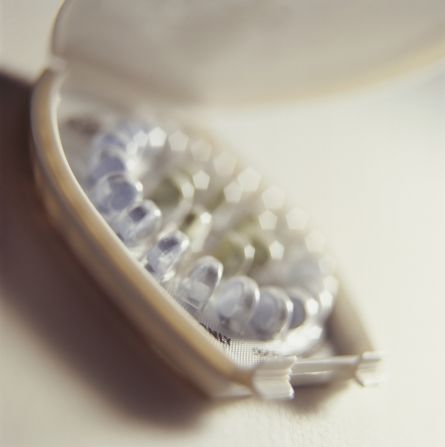Many people are looking forward to a time when men will be able to take an oral contraceptive.
But there’s a challenge with hormonal birth control: suppressing testosterone in men to super-low levels while avoiding the side effects of low hormone levels, such as changes in sexual function. (Of course, side effects have affected some women since the US Food and Drug Administration first approved “the pill” in 1960.)
Researchers have looked at a number of ways to do this – not only through a pill, but also through an injection and a topical gel. And now there’s a new drug in pill form, which has been evaluated for safety, though not effectiveness. The preliminary results of the latest drug – which goes by the abbreviation 11-beta-MNTDC – were presented Monday at the annual meeting of the Endocrine Society.
The trial included 40 healthy men, ages 18 to 50, including 10 who received a placebo. Despite low testosterone levels in the men taking the drug, the abstract notes “no serious adverse events” and a handful of cases of fatigue, headache, acne, decreased libido and mild erectile dysfunction.
If this seems like deja-vu: The same research team presented a similar drug, called DMAU, last year at the same conference. The drugs are synthetic molecules that bear similarity to male sex hormones – namely, testosterone.
The two drugs “are like brother and sister,” explained one of the study’s senior investigators, Dr. Christina Wang, associate director of the Clinical and Translational Science Institute at the Los Angeles Biomedical Research Institute. Wang explained that, when it comes to drug development, researchers don’t always put their eggs in one basket. If one doesn’t work as expected, perhaps there’s a backup, she said.
Experts say the drugs signal to the brain that testosterone levels are adequate, inhibiting the pathways that ultimately lead to the production of sperm. Wang said the new drug is meant to mimic testosterone’s effects in other parts of the body, which could be how it avoids major side effects. It may not stimulate sperm production in the testicles because the drug itself might not pass over from the blood stream – but that theory could only be fleshed out with future research, she said.
Wang said she expects people will have to wait roughly a decade for hormonal male contraception to hit the market. Future research must include longer-term studies that can make sure sperm production actually comes to a halt, she said. While her team found that testosterone levels fell over the course of one month on the drug, sperm production can take several months – so it will take much longer studies to show how the drug actually impacts sperm production, Wang explained.
Dr. Bobby Najari, assistant professor and director of the Male Infertility Program at NYU Langone Health, called the research exciting, adding that there’s huge demand for effective contraception that allows men to be more active in family planning. The ease of a male contraceptive pill seems more feasible for widespread use than injections studied in the past, he said.
Still, 10 years to market seems optimistic to him. It’s expensive to make an idea into reality, and lengthy, well-designed studies are required to make sure such a contraceptive is safe, effective and reversible.
The promise of a safe and effective oral male contraceptive “has been always on the verge of becoming a reality, but I feel like I’ve been hearing that for a long time now,” said Najari, who was not involved in the new research. “I think it’s going to take at least 10 years, if not longer.”
He noted this new research considered only one month, and there were some changes in participants’ cholesterol levels. A male contraceptive would be of interest to men of many ages, Najari said, and this could be particularly concerning for older men at higher risk of heart disease.
“The safety data in that group of men shouldn’t be ignored,” he said.
Get CNN Health's weekly newsletter
Sign up here to get The Results Are In with Dr. Sanjay Gupta every Tuesday from the CNN Health team.
In the meantime, there’s always condoms and vasectomies. Neither is both long-lasting and easily reversible, experts say. Other potential avenues have also been the focus of research, including an injectable gel that blocks sperm from exiting the testicles.
Wang said she’s spoken to a number of couples who are looking forward to a birth control pill for men. Some women have a difficult time on birth control, for example. And some couples simply want to find new and convenient ways to make contraception a joint effort, she added.
“Many of them want to share responsibility,” Wang said.
CNN’s Mark Lieber, Susan Scutti and Meera Senthilingam contributed to this report.















